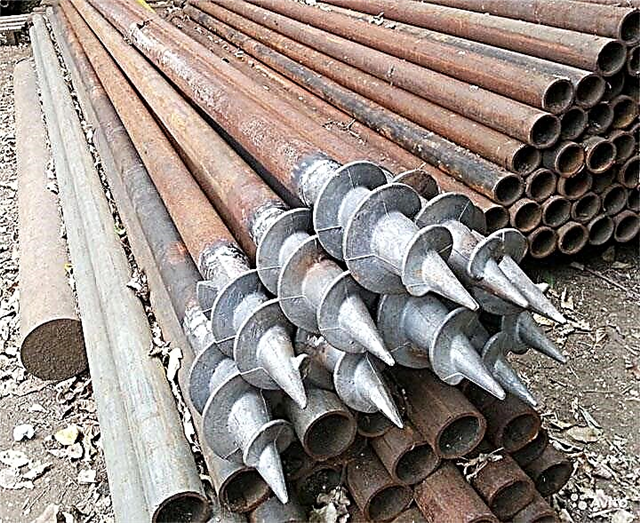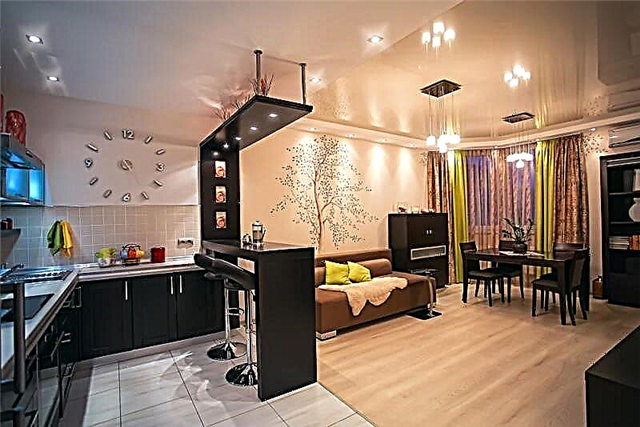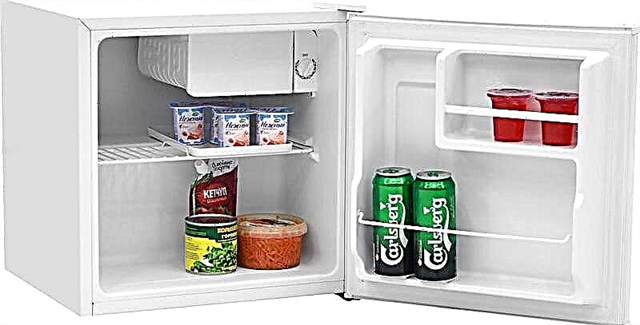Cassette blinds on plastic windows are intended only for installation separately on each fragment of a plastic window. They are divided into rhorizontal cassette blinds, these are the same blinds as isolite and isotra, and cassette roller blinds, also represent their two systems: uni 1 (uni 1) and uni 2 (uni 2). Separate detailed articles have already been written for all these types of cassette blinds, right there we just look at them all together and talk about their differences.
Types of cassette blinds
Cassette blinds Designed for installation on plastic windows and specially designed for this. Word cassette says that the blinds are located in a cassette, as it were, although I personally do not completely agree with this. The curtains and rolls of the uni roll blinds are really hidden, while the horizontal cassette blinds open the plastic louvres on the plastic windows, but each lamella is fixed with a tensioned cable. Nevertheless, they are also called - cassette.
Cassette Roller Blinds
Cassette Roller Blinds - these are the blinds for the shutters of plastic windows curled into a roll, the most common of which are two systems, uni 1 and uni 2. Uni blinds are systems that have guides in their possession, thanks to which the edges of the fabric are hidden behind them. Cassette blinds for plastic windows can be either chain-controlled or spring-loaded or electrically operated. The most expensive of them are of course automatic, but also the most convenient.
Blinds with guides on uni plastic windows - differences
Window blinds uni 1 and uni 2 differ from each other not only in guides. At uni 1 they are flat and at uni 2 U-shaped. There are also differences in the installation. The box Uni 1 on the frame of the plastic window is installed below so that the roll with the fabric is located between the side glazing beads closer to the glass. This has its pros and cons. The advantage will be that the product will take up less space (stick out less), as a result of which the sash will open at a large angle. And the minus is that this reduces the clearance. This does not suit all customers. Uni 1 also requires that the glazing bead depth of the window be at least 10 mm.
Differences cassette blinds pleated
- Pleated blinds with one movable cornice have only one cloth of corrugated fabric, and two for one day.
- Pleated blinds with several movable cornices can open the window from top to bottom, and from bottom to top.
- Blinds pleated day to night are almost twice as expensive as two fabric sheets are used, plus additional cornices are added.
Design features
 Cassette blinds represent a cloth which can be rolled up. This allows you to qualitatively adjust the luminous flux, if necessary, changing the position of the protective surface. Initially, this type of blinds was intended only for plastic windows.
Cassette blinds represent a cloth which can be rolled up. This allows you to qualitatively adjust the luminous flux, if necessary, changing the position of the protective surface. Initially, this type of blinds was intended only for plastic windows.
A feature of such models is that their installation does not require drilling of the window frame. Today, you can install cassette blinds on almost any type of window sash.
The design consists of several main elements:
- Canvases. The shape and design may be integral or consist of several movable elements that are interconnected.
- Cassette. This concept is often understood as a special shaft on which the web is wound. The design is equipped with a control mechanism. Many shafts are hidden in metal boxes, which allows you to give them the optimal design.
Many models have a small width, which often equals the size of a single sash.
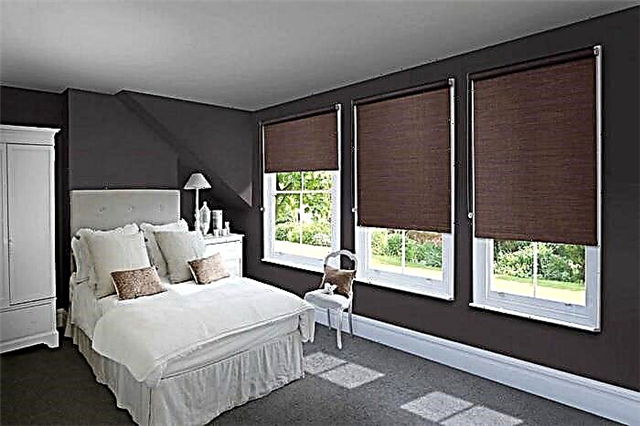

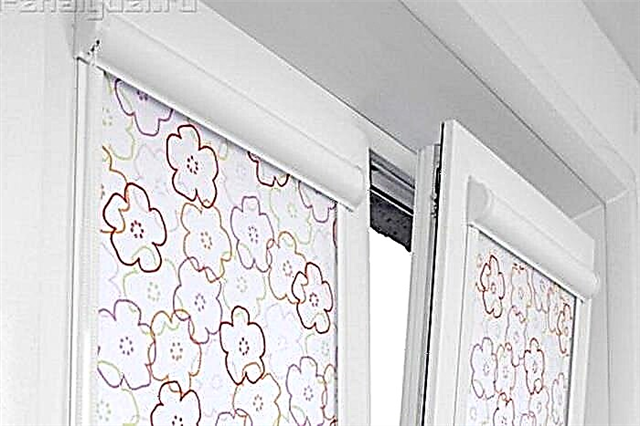
If the windows on which it is planned to install the blinds have a flap with a folding mechanism, it is better to choose mini-cartridges. The same applies to skylights with tilt. Mini-cartridges will allow the curtain to maintain the same tilt angle as the window. There is only one difference from conventional cassette blinds in mini-systems: the width of the lamella (the plates from which the curtain is assembled). For mini-blinds, it is used from 16 to 25 mm wide, for standard - from 25 to 50 mm.
Cassette blinds are installed in such a way as to cover only the glazed surface of the window. Double-glazed handles remain accessible, and there is no need to move the curtain to do any window manipulations.
Advantages and disadvantages
When developing cassette blinds, many wishes of customers were taken into account. This allowed us to make a design that will solve almost all problems in this area.



There are several positive aspects of cassette blinds:
Practicality. System management is quite simple, and the design can adapt to almost any type of window.
Aesthetics. Manufacturers in the manufacture of blinds use a variety of materials, which allows you to choose the design of the product for any interior style. Some modifications may be made to order.
Durability. The service life of both the material and the mechanism itself is virtually unlimited. If, nevertheless, a breakdown occurs, then all these elements can be replaced with new ones quite easily. To extend the period of operation, experts recommend that you properly care for the blinds.
High-quality light protection. This indicator is achieved through the use of special materials and impregnations. Some of them are able to repel dust or exhibit bactericidal effects.
Easy care. Canvas blinds should be periodically wiped with a dry or slightly damp cloth. For metal models, soap solutions are also used.
Ease of use. Cassette blinds fit snugly against the glass, without changing their position even with a slight tilt. At the same time, a peculiar air gap forms between these surfaces, which acts as a heat-insulating layer.
Easy installation. Installation of blinds can be performed even by an unprepared person. The main thing is to follow the manufacturer's recommendations.
Light weight. The canvas does not create large loads on the frame, which allows to increase its size. Therefore, such blinds can technically be made for any type of window.
It should be noted that these products are not universal and have several disadvantages:
Some types of fabric can absorb odorswhich cannot be removed later (rolls are not erased).
Weak lifting mechanism. This applies only to elements that are made of plastic.
Thin lamellas are easily damaged.. You can do this even by wiping them with a rag. To eliminate this feature, operation should be carried out very carefully.
Relatively complex design in comparison with other models of blinds. This is especially noticeable when dismantling the canvas.
What are cassette blinds
Blinds with a cassette in the design - this is a fairly popular type of curtains, they differ in many parameters. This allows us to distinguish among them many models and modifications.
Roll and cassette. A feature of this design is the use of a continuous fabric web as a protective layer. This allows you to quickly and efficiently wrap the layer into a roll, which is located inside the cassette. These models have unique properties. Conventionally, they can be divided into several subspecies:
Cassette. Standard modifications that are installed on all types of plastic windows. The width of the canvas can reach 3 m, which allows you to completely close the entire leaf. All these designs are complemented by special plumb bob, which regulate the lifting of the canvas.
Minicassette. This view is small in size. Initially, mini-cartridges were invented for installation on non-standard windows made of wood or European construction. Today they are found in various sizes and styles.
Uni. This type of curtains is distinguished by the presence of side guides, which allow better control of the movement of the canvas. Depending on the type of these elements, several subspecies of similar structures are distinguished. Often, this type of blinds is installed in offices, where they are well adapted to the style of the room.
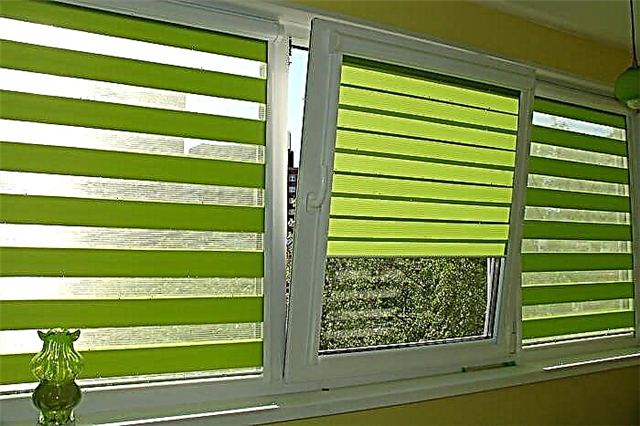
Today appeared blinds, consisting of several layers of fabric. Moreover, each of them is independent and has a different degree of transparency. This allows you to raise a specific layer, thus regulating the flow of light.
Horizontal
Horizontal blinds are a canvas consisting of many thin plates (lamellas). All these elements are connected by a thin thread, which connects them into a single design. It should be noted that the lamellas can rotate around its axis, which allows you to adjust the lighting more efficiently.
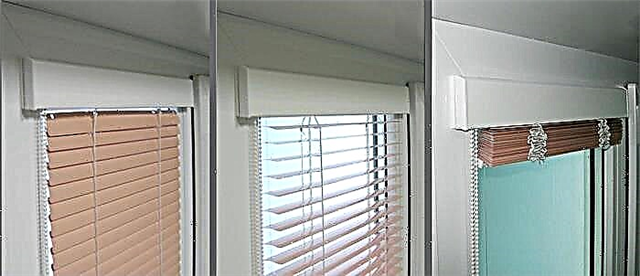
When lifted, the horizontal web is not curled into a roll, but compressed. All lamellas fit snugly against each other and then hide in a decorative box (cassette). The width of the plates can vary from 16 to 50 mm, depending on the material from which they are made.
A striking representative of this type are aluminum blinds, which are installed externally on doors or windows. They not only protect rooms from light, but also provide safety.
Vertical
Any blinds are not just curtains, but a full-fledged mechanism, consisting of many details. At a minimum, these are: lamellas, connecting and control chains, runners, weights, a cornice and a control rope.
Lamels - strips of fabric with a width of 89 mm (rarely up to 120 mm), regulating the illumination. They not only move to the right, left, or sides different from the center, depending on how many mechanisms (one or two) are installed on the cornice, but also rotate 180 ° around their axis.

Cornice - the device to which the lamellas are attached. In order for the blinds to last for a long time, when buying it, it is advisable to pay attention to the following nuances:
- Eaves for blinds are aluminum and plastic. Plastic turns yellow over time, loses its presentation and bends under the weight of the curtains, so it is better to choose more durable and durable aluminum cornices.
- The width of the cornice should correspond to the mass and length of the lamellas. So, for light curtains with a height of 3 m, a cornice with a width of 2.5 m is enough, and for those with the same height, but heavier, a curtain rod with a width of at least 3 m is needed.
- All moving elements should move easily and smoothly. The cord and control chain must not be twisted. Otherwise, once they’re just stuck in a mechanism.
Runners - small parts with which the lamellas are held on the ledge.
Weights - weighting dies threaded into the lower parts of the lamellas. With their help, the blinds hang smoothly and do not swing.
Connecting chain - a rope of plastic or metal balls strung on a fishing line connecting the strips of fabric to each other. The control chain is made by analogy with the connecting chain. With its help, the lamellas rotate around its axis. The control rope is made of plastic. It allows you to move and push the blinds.
Possible ways to control
Blinds can be controlled in three ways using:
- manual control with a lace, chain or spring,
- spring-loaded systems
- automatic control with a special drive.
Chain blinds. Adjustment of lamellas is carried out by the movement of a specially derived thread. This option is used very often, as it is the simplest and most reliable.
Spring loaded. The blade is controlled using a special spring. They are very rare today, since such a design does not allow a reliable fixation.
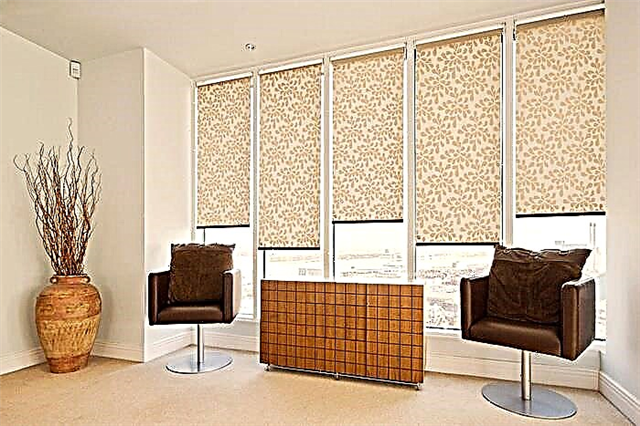

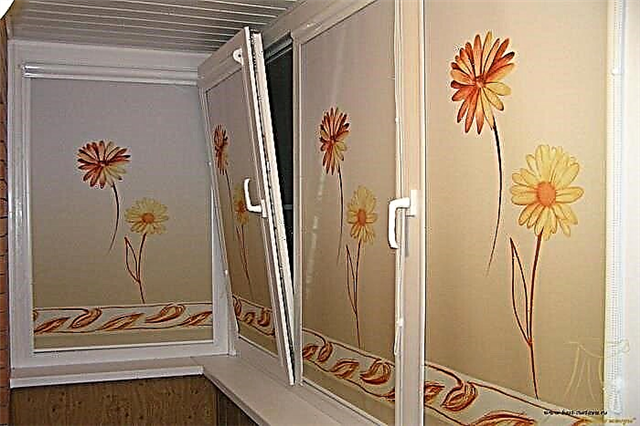


Automatic systems. The most modern form of management. It is performed using a special electric motor, which drives a shaft or a lifting thread. Control can be carried out both using the stationary button, and from the remote control. Many systems can be equipped with light sensors, which cause the mechanism to rise or fall automatically. An electronic control system equipped with an electric cornice will cover a large area. To do this, there is no need to execute complex programs, a simple press of a button on the remote control, and using the remote control, the blinds will rise or fall in automatic mode. The cost of electronic systems is slightly higher than for simpler models with manual control. However, the price justifies ease of use.
Material division
Today, the market for materials is very wide, and this practically does not limit the manufacturers of blinds in using them for their needs. For horizontal cassette blinds, both natural and synthetic materials can be used.
Depending on the type of material used, the blinds can be:
- from fabric (a huge variety of materials: acrylic, viscose, cotton, linen, silk, etc.),
- made of plastic
- from wood
- from bamboo
- aluminum
- from nonwoven fabric.
For the manufacture of horizontal structures using several materials:
Tree. The lamellas are distinguished by their unique structure, and also perfectly tolerate heating. But they are undesirable to use in a humid environment (in the kitchen or in the bathroom), as they may lose their unique design.
Bamboo. One of the most popular materials. Today on the market there are both bamboo lamellas and original canvases made of this material, which can be twisted into a roll.
Aluminum. Metal perfectly tolerates external influences. Blinds can be installed both inside and outside buildings. Lamels differ in durability and practicality.
Plastic. The substance is durable and well resists aggressive substances. Blinds from it cost much less, but at the same time they are not inferior in quality to other models.





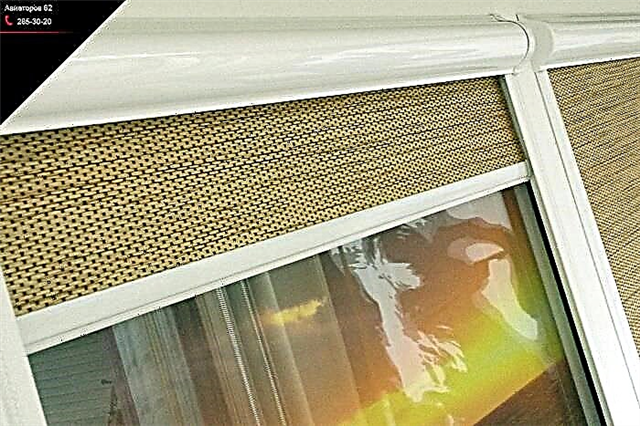
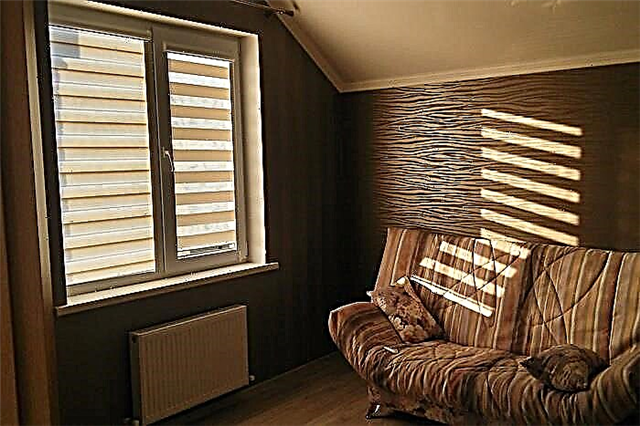
As for rolled curtains, they are made of many fabrics, among which several main ones can be distinguished:
Acrylic. Canvases from it are found less and less, since the material is very poor in air permeability. The service life of acrylic products is relatively small, but at the same time they practically do not crease.
Viscose. The basis of this fabric is cellulose. These canvases are lightweight and washable well. But the material quickly burns out and loses its external characteristics.
Linen. Linen fabrics have high strength, and can also be used in various temperature conditions. The substance is completely natural and poses no danger to human health.
Cotton. Natural fabric that is very easy to wash. But with constant exposure to the sun, the material gradually loses its strength.
Silk. Canvases from it are the most beautiful and expensive. At the same time, the material crumple and burn out very quickly. Therefore, these elements often have to be replaced with new products.
The curtain of almost all materials is subjected to special processing, so that it does not accumulate static electricity and becomes waterproof. UV impregnation significantly reduces the effect of sunlight and allows you to maintain the original color of the blinds for many years. All this simplifies the care of them and increases their uptime.
A variety of colors and textures of materials, as well as the use of modern printing technologies give a huge scope for creativity and allow you to choose the right model for any interior.
Blinds can be made not only in different colors, but also apply drawings and photographs to them. Such unique blinds will make any room unusual, bright, comfortable and expressive.
Use in the interior of the apartment
Thanks to cassette blinds, you can create the effect of a different time of day in the room.
Modern technology has allowed the creation of such curtains that absolutely do not let in the sun. By closing the curtain with the blackout effect, you can completely stop sunlight from entering the windows, and even in the midst of the day find yourself in a completely dark room.

These blinds are ideal in the bedroom: hanging them on the window, you can not be afraid that the sunlight will wake up before you can sleep.
Cassette blinds of the "day-night" type are also capable of regulating the illumination in the room. To create them, materials with different light transmittance, textures and colors are usually used, or two curtains are combined with different characteristics according to the type of zebra. Thanks to such different properties, you can create the necessary level of illumination by just lowering or raising the curtain.

These blinds will perfectly take root in a room overlooking the sunny side. Their diverse fabric will absorb excessive light and heat, while maintaining a comfortable temperature and lighting in the room.
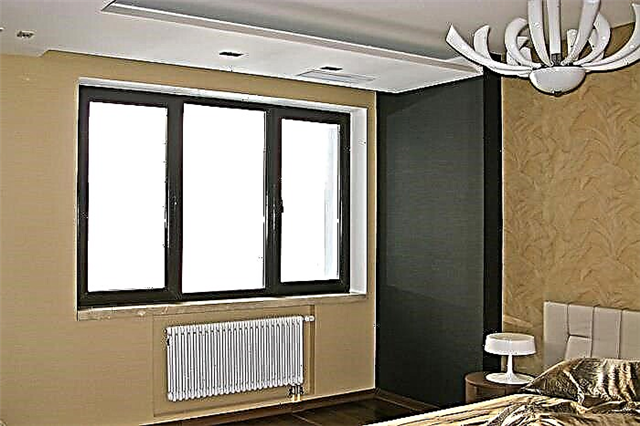
Blinds for balcony windows - optimal solution. As a rule, they are aluminum, but can be made of fabric. Cassette blinds are conveniently mounted and do not interfere with the opening of windows, do not interfere with movement on the balcony and are easy to clean. They can be fixed so that they cover only the glass cloth, it will be very convenient and will allow you to adjust the illumination of each window individually.
Installation methods
Installation of cassette blinds can be done in several ways:
- Glue. Mini designs are usually used here - reliable, lightweight and easy to operate. Installation on the sash does not require drilling, fastening is carried out on adhesive tape or special plastic or metal clips. Heavy blinds are best fixed on self-tapping screws. The curtain is made up to the windowsill, which remains free, which is very convenient when you need to save every centimeter of space.
- On fasteners. For sliding types of window systems, gluing is not possible, the box will not allow the sash to open to the side. Sometimes the interior design requires to completely cover the opening, for example, due to the design features of the opening or it is necessary to correct the proportions of the space. In such cases, it is possible to mount on a wall from above or on the ceiling, fastening is done on special brackets with dowel-screws.
It is possible to install blinds of this type both directly on the window sashes (the best way), and on the wall above the opening or inside it.
See how to install the blinds in the next video.
Product Care
Cassette blinds are completely undemanding in leaving. They need to be wiped from time to time with a damp cloth or vacuum cleaned. If severe contaminants appear, they are favorable to cleaning with special chemicals, calmly perceive the effects of household cleaning products. Due to these properties, they will be appropriate both in office premises, in the kitchen, and in the living rooms and bedrooms of a residential building.












However, some surfaces can be quite moody. For example, wooden slats do not like moisture, so you need to wipe them dry.
The most difficult to maintain are roll materials. They should only be cleaned with a vacuum cleaner. Experts do not recommend washing the fabric; it is better to place it in a dry-cleaner. This should be done twice a year. As for the lifting mechanism, care for it is not required. If a breakdown does occur, it can be repaired at service centers.
Management methods
Blinds can be controlled in three ways using:
- manual control with a lace, chain or spring,
- spring-loaded systems
- automatic control with a special drive.

- Manual control more suitable for small windows, rooms where there are few windows or a system with mini cassettes.
- Spring-loaded systems differ from manual ones in that for raising or lowering the curtains you only need to turn the handle, the rest will be done by the mechanism. Blinds with such a mechanism are suitable for installation on both hinged surfaces and skylights.

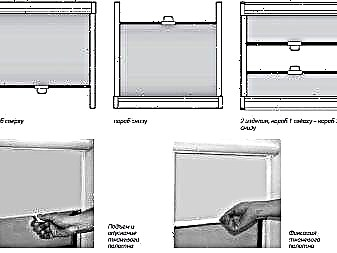
- Electronic control systemequipped with an electric cornice, will cover a large area. To do this, there is no need to execute complex programs, a simple press of a button on the remote control, and using the remote control, the blinds will rise or fall in automatic mode. The cost of electronic systems is slightly higher than for simpler models with manual control. However, the price justifies ease of use.
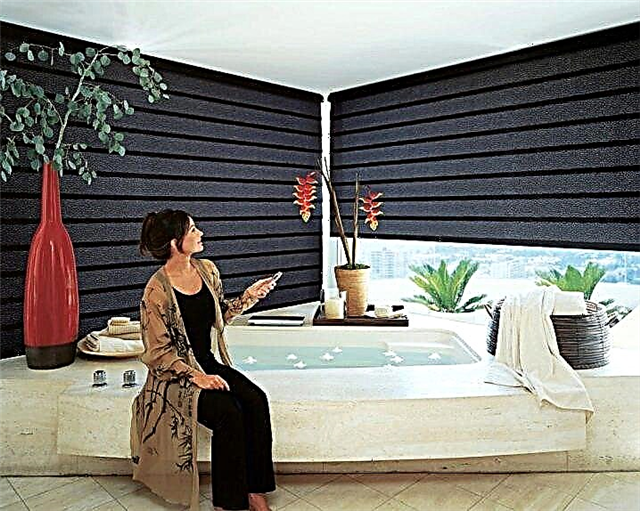
Cassette blinds can be installed exclusively on vertical surfaces, therefore, they are most often installed on the window, fixing in two places:
Mini-designs are considered in this case a more advantageous option, since they are quite reliable and easy to manage. In order to install the box with the blinds on the window, usually use tape, brackets or metal clips. Drilling is not used, so these designs are suitable for plastic window blocks.
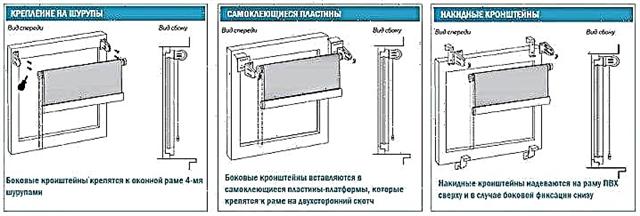
In some cases, blinds are mounted to a wall or ceiling to fully utilize the capabilities of sliding window systems. With this design, self-tapping screws are used for fastening. The design allows installing cassette blinds on plastic windows.
See the following video for the correct installation of cassette blinds.
What materials are made of?
Today, the market for materials is very wide, and this practically does not limit the manufacturers of blinds in using them for their needs. For horizontal cassette blinds, both natural and synthetic materials can be used.
Depending on the type of material used, the blinds can be:
- from fabric (a huge variety of materials: acrylic, viscose, cotton, linen, silk, etc.),
- made of plastic
- from wood
- from bamboo
- aluminum
- from nonwoven fabric.
The curtain of almost all materials is subjected to special processing, so that it does not accumulate static electricity and becomes waterproof. UV impregnation significantly reduces the effect of sunlight and allows you to maintain the original color of the blinds for many years. All this simplifies the care of them and increases their uptime.
A variety of colors and textures of materials, as well as the use of modern printing technologies give a huge scope for creativity and allow you to choose the right model for any interior.
Blinds can be made not only in different colors, but also apply drawings and photographs to them. Such unique blinds will make any room unusual, bright, comfortable and expressive.
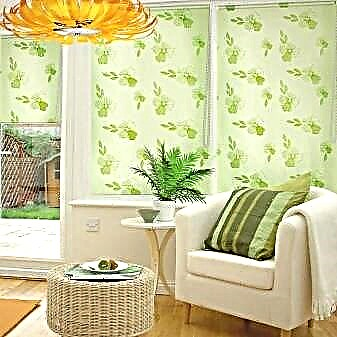

How to care?
Cassette blinds are completely undemanding in leaving. They need to be wiped from time to time with a damp cloth or vacuum cleaned. If severe contaminants appear, they are favorable to cleaning with special chemicals, calmly perceive the effects of household cleaning products. Due to these properties, they will be appropriate both in office premises, in the kitchen, and in the living rooms and bedrooms of a residential building.
However, some surfaces can be quite moody. For example, wooden slats do not like moisture, so you need to wipe them dry.
Design feature
Cassette blinds represent a cloth which can be rolled up. This allows you to qualitatively adjust the luminous flux, if necessary, changing the position of the protective surface. Initially, this type of blinds was intended only for plastic windows.
A feature of such models is that their installation does not require drilling of the window frame. Today, you can install cassette blinds on almost any type of window sash.
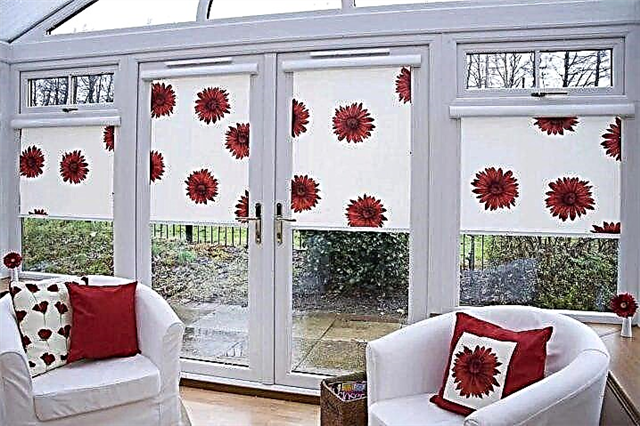
The design consists of several main elements:
- Canvases The shape and design may be integral or consist of several movable elements that are interconnected.
- Cassette. This concept is often understood as a special shaft on which the web is wound. The design is equipped with a control mechanism. Many shafts are hidden in metal boxes, which allows you to give them the optimal design.
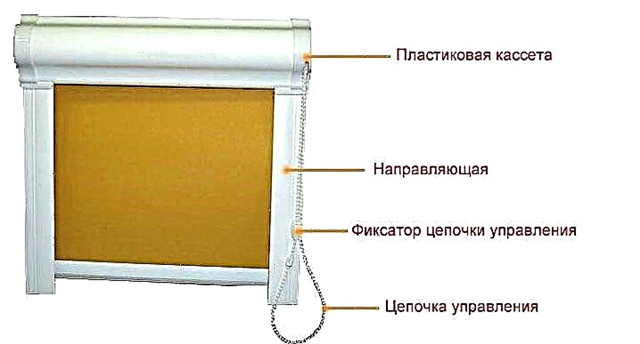
Many models have a small width, which often equals the size of a single sash.

